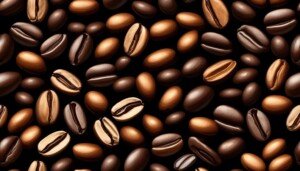So, you've decided to upgrade your morning coffee routine and are considering investing in an espresso machine.
As you start researching, you come across two main types: super automatic and manual espresso machines.
You might be wondering, what exactly sets these two apart? Well, the answer lies in a variety of factors, including the brewing process, control and customization options, ease of use, maintenance and cleaning requirements, price range, and overall espresso quality.
But fear not, we will delve into each of these aspects to help you make an informed decision.
Key Takeaways
- Super automatic machines offer convenience and simplicity with a one-button brewing process, ideal for those who value speed and hassle-free experience.
- Manual machines provide a more hands-on approach to brewing, allowing complete control over variables and the opportunity to develop barista skills.
- Manual machines offer customization and experimentation, allowing users to adjust grind size, amount of coffee, water temperature, and extraction time for a customized cup of espresso.
- Super automatic machines sacrifice some control over the final product in exchange for convenience, with limited customization options and preset programs optimized for specific types of coffee.
Brewing Process
When it comes to the brewing process, both super automatic and manual espresso machines offer distinct advantages.
With a super automatic machine, the brewing process is incredibly convenient and easy. All you have to do is press a button, and the machine takes care of grinding the coffee beans, tamping the grounds, and brewing the espresso. This makes it ideal for those who value speed and simplicity.
On the other hand, manual espresso machines require a more hands-on approach. You have complete control over the brewing process, from grinding and tamping the coffee to manually pulling the shot. This allows for greater customization and the ability to experiment with different variables to achieve the perfect espresso shot. Manual machines also give you the opportunity to develop your barista skills and truly connect with the brewing process.
Control and Customization
Do you want complete control over your espresso brewing process? If so, then a manual espresso machine might be the perfect choice for you. With a manual machine, you have the ability to adjust every aspect of the brewing process to create a customized cup of espresso that suits your taste preferences. From the grind size and the amount of coffee to the water temperature and the extraction time, you have complete control over each step. This level of control allows you to experiment and fine-tune your brewing technique to achieve the perfect balance of flavors and aromas.
On the other hand, a super automatic espresso machine offers less control and more convenience. These machines are designed to automate the brewing process, taking care of everything from grinding the beans to frothing the milk. While this may be appealing to some, it means that you have less control over the final product. Super automatic machines often have preset brewing programs that are optimized for specific types of coffee, so customization options may be limited.
Ultimately, the choice between a manual and super automatic machine depends on your personal preferences. If you enjoy the process of brewing espresso and want to have full control over every aspect, a manual machine is the way to go. However, if convenience is your top priority and you don't mind sacrificing some control, a super automatic machine may be more suitable for you.
Ease of Use

Using an espresso machine should be a breeze, regardless of whether you choose a manual or super automatic model. Both types of machines offer different levels of ease of use, catering to different preferences and skill levels.
Manual espresso machines require more hands-on involvement and skill. You have complete control over every step of the espresso-making process, from grinding the coffee beans to tamping and brewing. This level of control allows you to adjust variables like water temperature and extraction time, giving you the flexibility to experiment and achieve your desired flavor profile. However, it also means that there's a learning curve involved, and it may take some practice to master the technique.
On the other hand, super automatic espresso machines are designed to make the process as effortless as possible. With just a push of a button, these machines take care of everything, from grinding and tamping to brewing and milk frothing. They typically come with pre-programmed settings that allow you to select your preferred strength and size of the espresso shot. This makes them perfect for those who want a quick and convenient way to enjoy a perfect cup of espresso without the need for any manual intervention.
Ultimately, the choice between a manual or super automatic espresso machine comes down to your personal preference and level of involvement you want in the brewing process.
Maintenance and Cleaning
Maintaining and cleaning an espresso machine is essential for ensuring its longevity and optimal performance. Regular maintenance and cleaning help to remove build-up, prevent clogs, and keep your machine running smoothly.
For a super automatic espresso machine, the cleaning process is typically automated. These machines often have self-cleaning functions that flush out the internal components. However, it's still important to regularly clean the removable parts, such as the brew group and milk frother. This can be done using warm water and a mild detergent.
On the other hand, manual espresso machines require more hands-on maintenance. You'll need to clean the portafilter, group head, and steam wand after each use. This can be done by rinsing them with water and wiping them down with a clean cloth. Additionally, manual machines may require descaling to remove mineral deposits. This can be done using a descaling solution recommended by the manufacturer.
No matter which type of espresso machine you own, it's important to follow the manufacturer's instructions for maintenance and cleaning. This will ensure that your machine remains in good condition and continues to produce delicious espresso.
With proper care, your espresso machine can provide many years of enjoyment.
Price Range

When considering the price range of espresso machines, it's important to understand the factors that contribute to their cost.
The price of an espresso machine can vary widely depending on its features, brand, and quality.
Manual espresso machines are generally more affordable than super-automatic machines. They require manual operation, which means you have more control over the brewing process but also requires more skill and effort on your part.
Manual machines typically range from $100 to $500, with some high-end models reaching up to $1,000.
On the other hand, super-automatic espresso machines are designed to automate the brewing process, making it easier and more convenient for you. They often come with additional features such as built-in grinders and milk frothers.
Super-automatic machines tend to be more expensive, with prices ranging from $500 to $3,000 or more for top-of-the-line models. However, they offer a high level of convenience and consistency in the brewing process.
Ultimately, the price range of espresso machines depends on your preferences, budget, and how much control you want over the brewing process.
Overall Espresso Quality
To assess the overall quality of espresso, it's important to consider factors such as the machine's brewing capabilities and the consistency of the final cup.
When it comes to brewing capabilities, manual espresso machines offer more control over the brewing process. You can adjust variables like water temperature, grind size, and tamping pressure to achieve your desired flavor profile. This level of control allows for customization and experimentation, resulting in a potentially higher quality espresso.
On the other hand, super automatic machines automate the brewing process, making it easier and more convenient for users. These machines typically have preset programs that control variables like water temperature and extraction time. While this automation may sacrifice some control, it ensures consistency in every cup. The built-in grinder also ensures that the coffee is freshly ground for each shot, enhancing the overall taste.
Frequently Asked Questions
What Is the Difference in Taste Between Espresso Made With a Super Automatic Machine and a Manual Machine?
When comparing the taste of espresso made with a super automatic machine versus a manual machine, the difference lies in the level of control. With a manual machine, you have more control over variables like grind size and extraction time, which can result in a more personalized and nuanced flavor profile. On the other hand, a super automatic machine automates these processes, offering convenience but potentially sacrificing some control over taste.
Can a Super Automatic Machine Produce Latte Art Like a Manual Machine?
Yes, a super automatic machine can produce latte art like a manual machine. It has built-in features like milk frothers and programmable settings that allow you to create intricate designs with ease.
Are Super Automatic Machines More Prone to Breakdowns and Technical Issues Compared to Manual Machines?
Super automatic machines are generally not more prone to breakdowns and technical issues compared to manual machines. However, it is important to properly maintain and clean any espresso machine to ensure its longevity and performance.
Are There Any Specific Coffee Beans or Grounds That Work Better With Super Automatic Machines Compared to Manual Machines?
With super automatic machines, you can use any coffee beans or grounds that you prefer. These machines are designed to handle a variety of coffee types and produce consistent results. Enjoy your perfect cup!
Can a Super Automatic Machine Produce a Higher Volume of Espresso Shots in a Shorter Period of Time Compared to a Manual Machine?
Yes, a super automatic machine can produce a higher volume of espresso shots in a shorter time compared to a manual machine. It's designed for efficiency and automation, allowing you to make more drinks quickly.
Conclusion
In conclusion, the main difference between a super automatic and manual espresso machine lies in the level of control and customization. Super automatic machines handle the entire brewing process with the push of a button, while manual machines allow for more hands-on control.
The ease of use, maintenance, and cleaning also vary between the two types. Super automatic machines are generally easier to use and require less effort to clean and maintain. On the other hand, manual machines may require more skill and practice to operate effectively, and they may also require more frequent cleaning and maintenance.
Additionally, the price range and overall espresso quality can differ between super automatic and manual machines. Super automatic machines tend to be more expensive due to their advanced features and convenience. The quality of espresso produced by these machines is generally consistent and can be adjusted to individual preferences. Manual machines, on the other hand, are generally more affordable but require more skill to achieve consistent results.
In summary, when choosing between a super automatic and manual espresso machine, it is important to consider your preferences and needs. If you value convenience, ease of use, and consistent results, a super automatic machine may be the better choice. However, if you enjoy the hands-on process of making espresso and are willing to invest time and effort into mastering the technique, a manual machine can provide a more personalized and rewarding experience.




